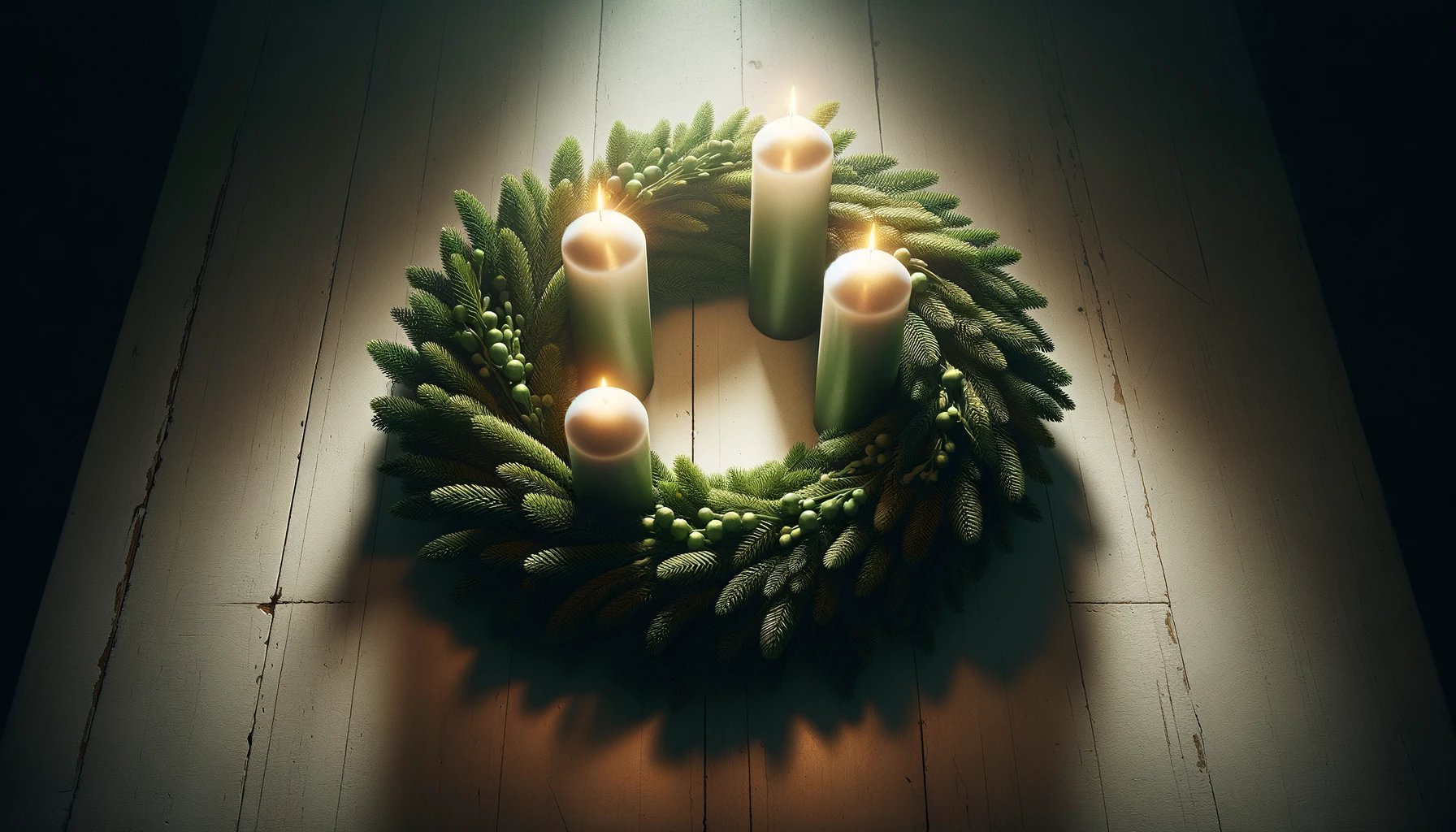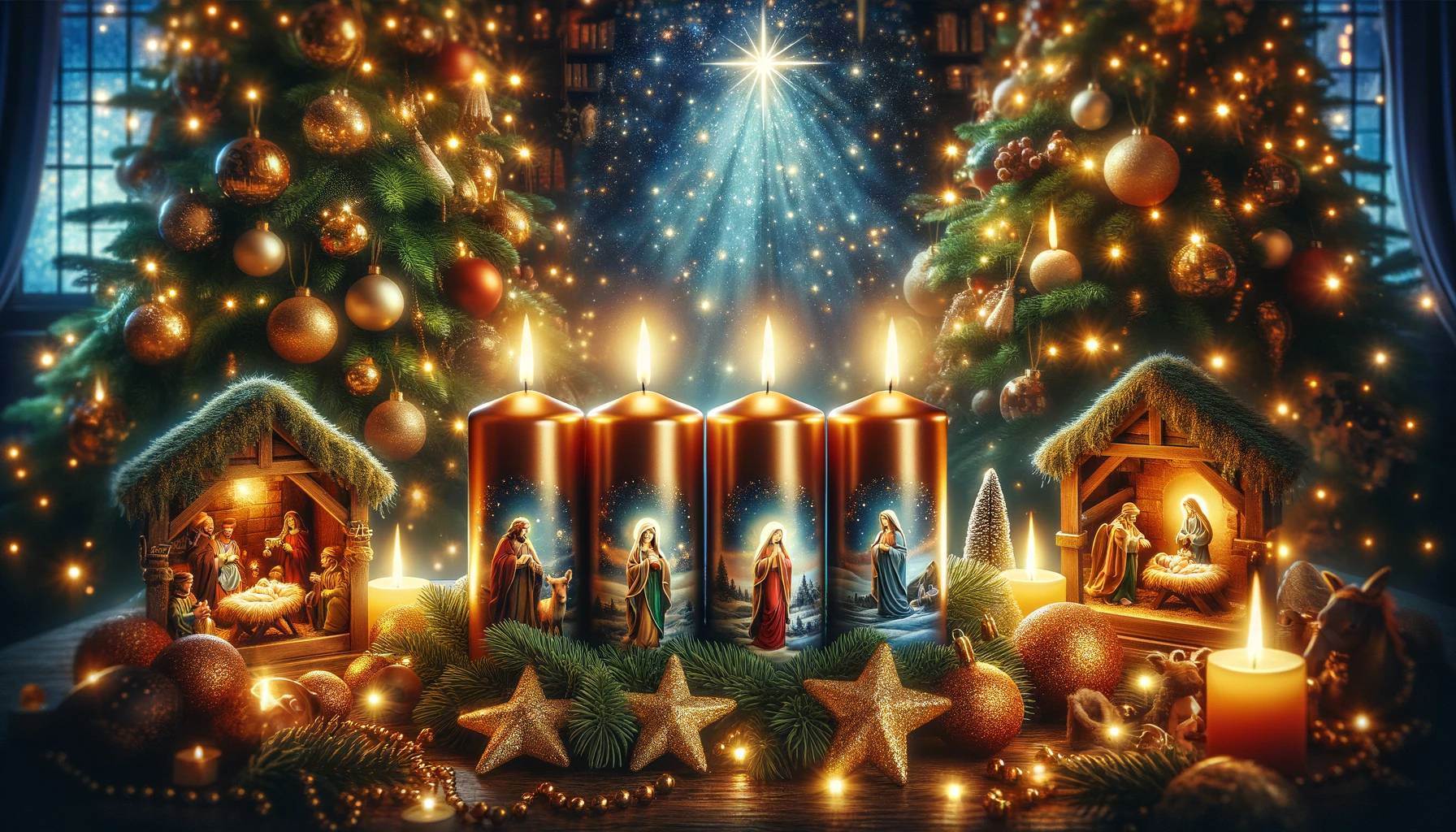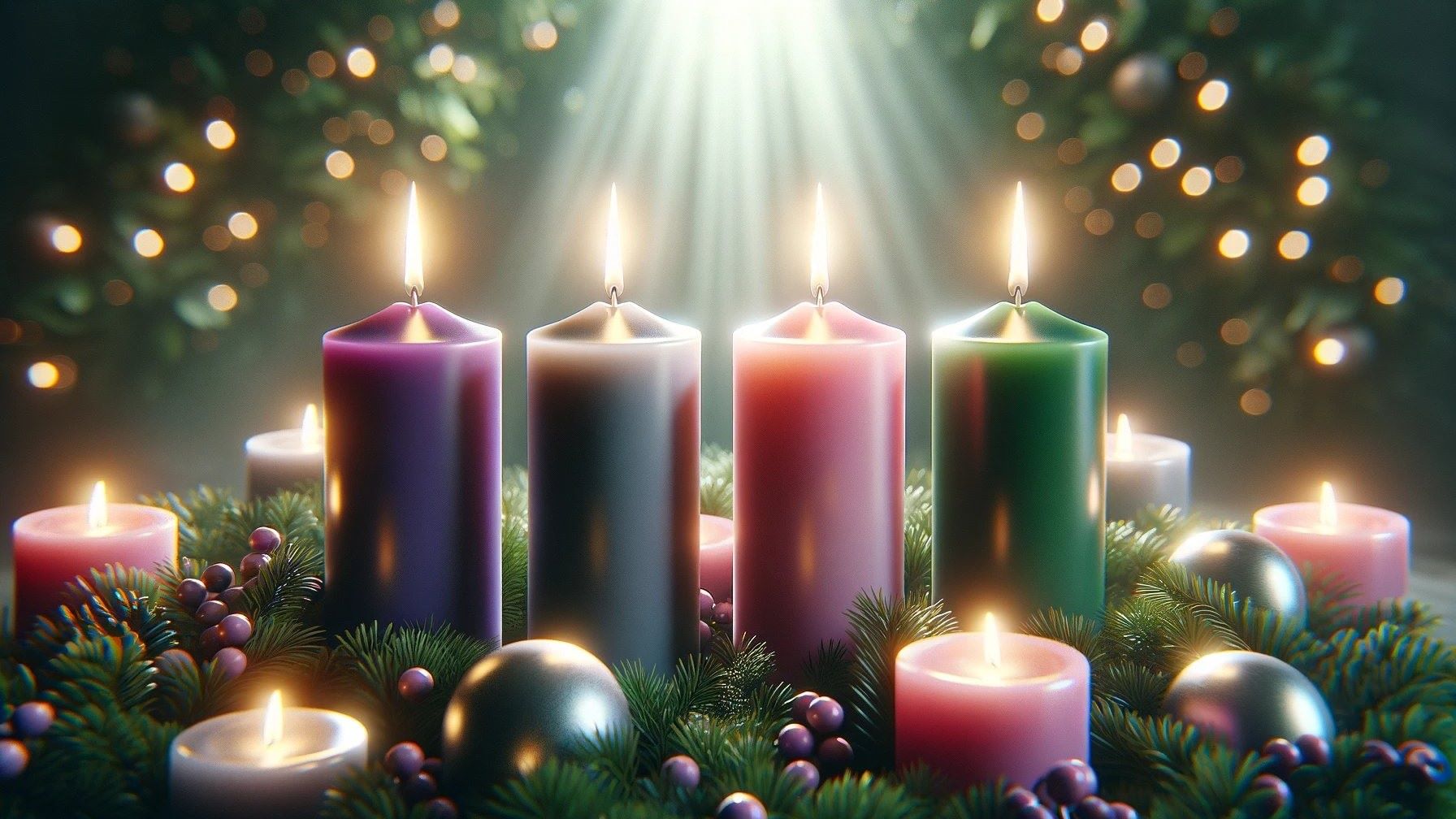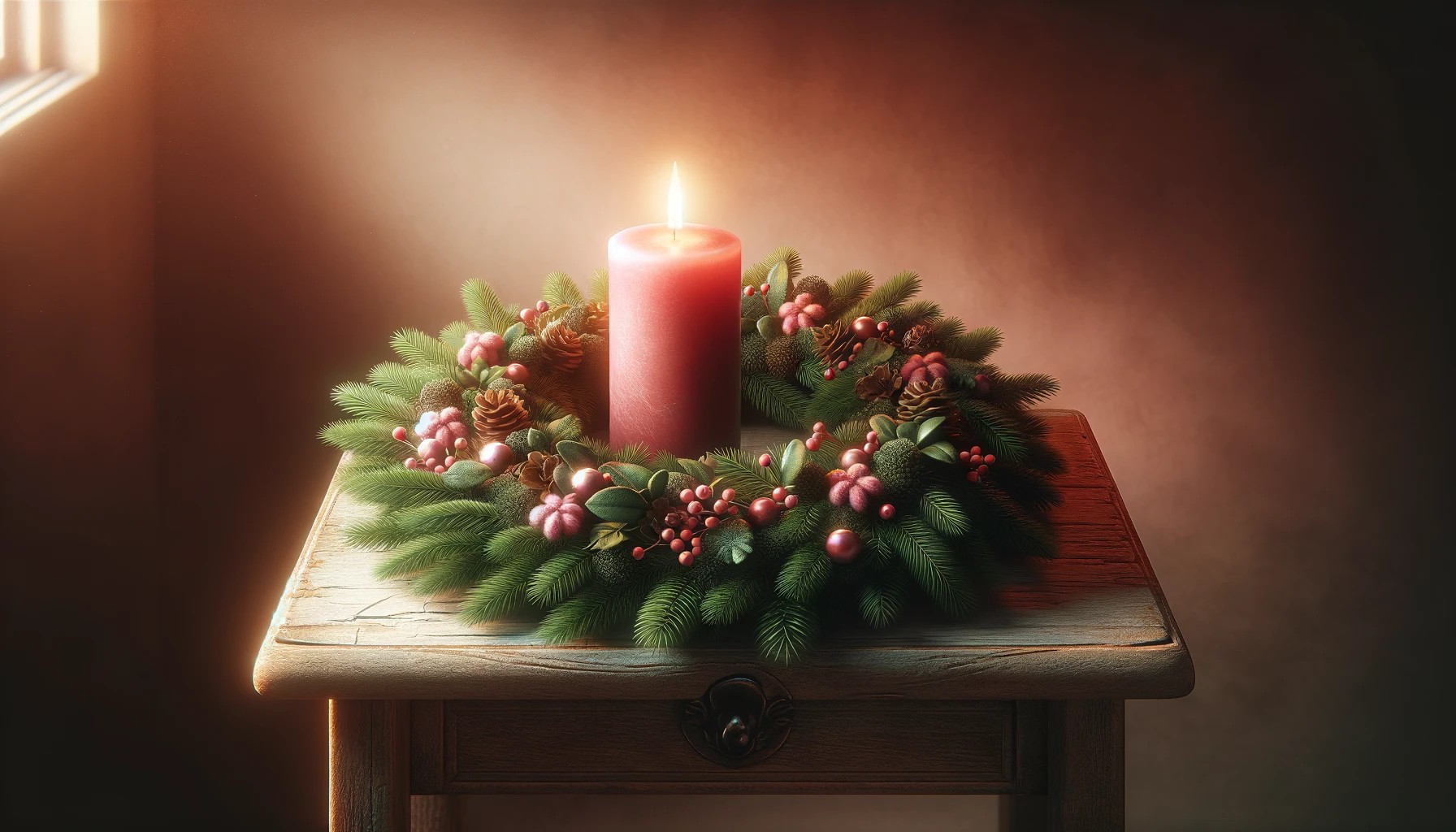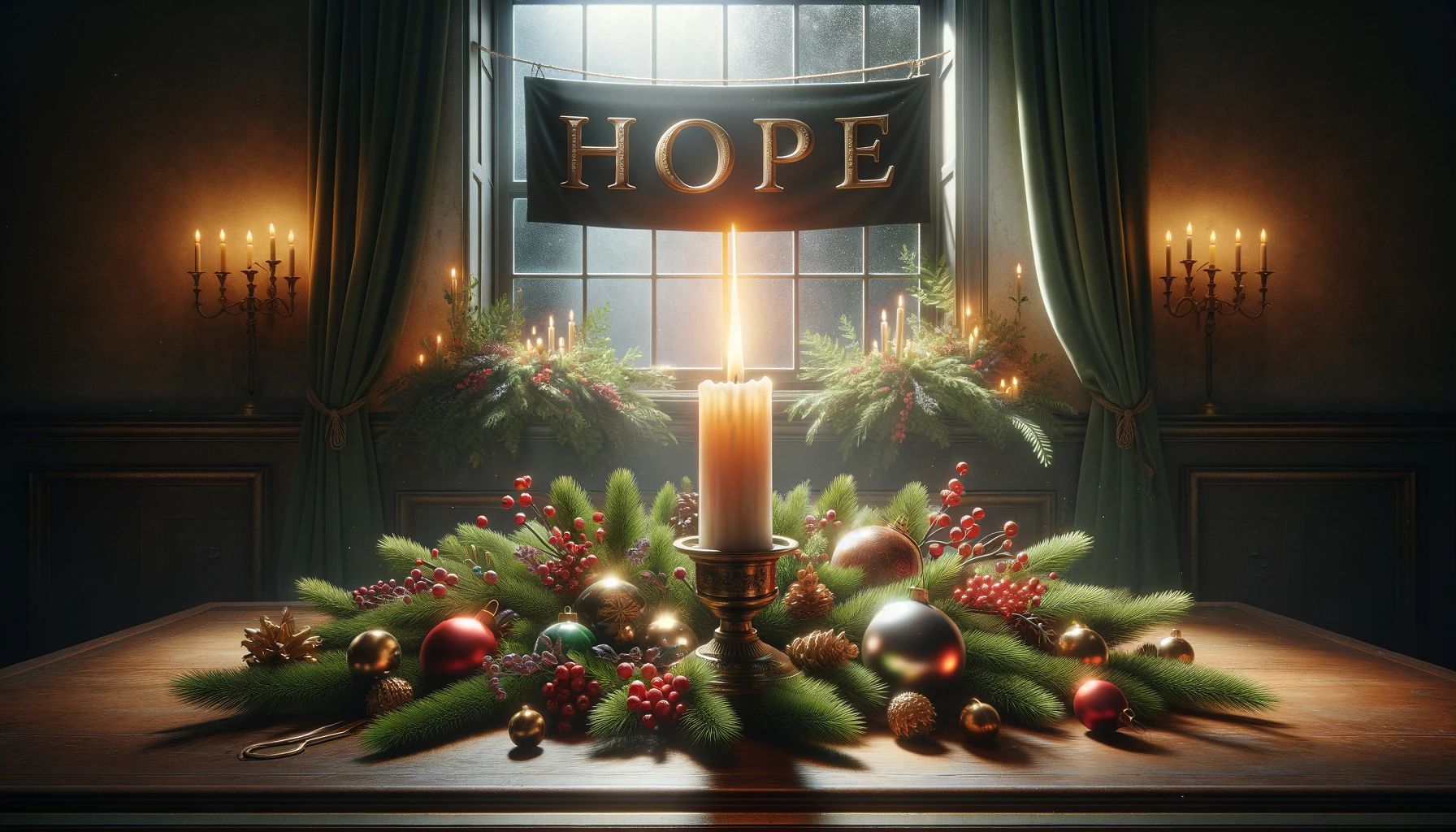Home>Special Themes>How To Use Advent Candles


Special Themes
How To Use Advent Candles
Published: February 13, 2024
Jason DeRose, Managing Editor at Christian.net, uses his expertise in religion and journalism to deepen understanding of faith's societal impacts. His editorial leadership, coupled with a strong academic background, enriches the platform’s diverse content, earning him recognition in both journalism and religious circles.
Learn how to incorporate special themes and meaningful traditions with advent candles. Discover the significance and create a memorable experience for your family.
(Many of the links in this article redirect to a specific reviewed product. Your purchase of these products through affiliate links helps to generate commission for Christian.net, at no extra cost. Learn more)
Table of Contents
Introduction
Advent, derived from the Latin word "adventus," meaning "coming," is a significant period observed by Christians around the world. It marks the beginning of the liturgical year and symbolizes the anticipation of the birth of Jesus Christ. One of the most cherished traditions during this time is the use of Advent candles, which hold profound symbolism and meaning.
Advent candles are a focal point of the Advent season, serving as a visual representation of the spiritual preparation and waiting for the celebration of Jesus' birth. These candles are typically arranged in an Advent wreath, with each candle holding its own significance and purpose. As the weeks progress, the lighting of these candles serves as a poignant reminder of the journey towards Christmas.
The use of Advent candles dates back centuries and has become a cherished tradition in many Christian households. It provides a tangible way to mark the passage of time and reflect on the spiritual significance of the season. The lighting of each candle symbolizes the increasing brightness and hope brought by the imminent arrival of Jesus, the light of the world.
As we delve into the intricacies of using Advent candles, it's essential to understand the rich symbolism and traditions associated with this practice. From selecting the right candles to setting up the Advent wreath and observing time-honored rituals, each aspect contributes to a meaningful and reflective Advent experience. Let's embark on a journey to explore the profound significance of Advent candles and how they enrich the spiritual observance of the Advent season.
Read more: How To Light The Advent Candles
Choosing the Right Advent Candles
Selecting the right Advent candles is a crucial step in embracing the spirit of the Advent season. These candles hold deep symbolism and are carefully chosen to align with the spiritual significance of the period leading up to Christmas. When choosing Advent candles, several factors should be considered to ensure they authentically represent the essence of the season.
Consider the Colors
Advent candles traditionally come in three purple, one pink, and one white. The purple candles symbolize penance, preparation, and sacrifice, reflecting the solemnity of the season. The pink candle, lit on the third Sunday of Advent, represents joy and anticipation, signifying the nearness of the celebration of Christ's birth. The white candle, often placed in the center, is lit on Christmas Eve or Christmas Day, symbolizing purity and the arrival of Christ, the Light of the World.
Quality and Size
Opting for high-quality candles ensures a steady and even burn, allowing for a serene and uninterrupted observance of the Advent season. Additionally, the size of the candles should be proportionate to the Advent wreath, creating a harmonious visual display. It is essential to choose candles that fit securely in the designated holders of the Advent wreath, ensuring safety and stability during the lighting ceremonies.
Symbolic Significance
Beyond the colors, the candles themselves hold symbolic significance. The act of lighting each candle represents the progression of time and spiritual preparation. As the weeks of Advent unfold, the increasing illumination signifies the growing anticipation and hope associated with the imminent arrival of Jesus Christ. Therefore, selecting candles that embody these profound meanings enriches the observance of the Advent season.
Read more: What Is An Advent Candle?
Fragrance and Material
While not a traditional requirement, some individuals opt for scented Advent candles to enhance the sensory experience of the season. The choice of fragrance, such as frankincense or myrrh, can evoke a sense of reverence and spiritual contemplation. Additionally, considering the material of the candles, whether traditional wax or eco-friendly alternatives, aligns with personal values and environmental consciousness.
In essence, choosing the right Advent candles involves a thoughtful consideration of their colors, quality, symbolic significance, and additional sensory elements. By carefully selecting candles that encapsulate the essence of the Advent season, individuals can enrich their spiritual journey and create a meaningful visual representation of the anticipation leading up to Christmas.
Setting Up the Advent Wreath
Setting up the Advent wreath is a cherished tradition that holds profound symbolism and spiritual significance. The Advent wreath, typically crafted from evergreen foliage, symbolizes eternal life and the everlasting presence of God. As a focal point of the Advent season, the wreath serves as a visual reminder of the spiritual journey towards Christmas and the anticipation of the birth of Jesus Christ.
To begin the process of setting up the Advent wreath, it is essential to select a location that holds significance within the household. Whether placed on a dining table, a mantle, or a prominent surface, the positioning of the Advent wreath should allow for easy visibility and accessibility during the lighting ceremonies.
The traditional Advent wreath consists of a circular arrangement of evergreen branches, symbolizing God's unending love and the eternal nature of His promises. Within this wreath, four candles are evenly spaced, with a fifth candle often placed in the center. The outer candles, typically three purple and one pink, represent the four weeks of Advent, with each candle signifying the passage of time and the spiritual themes associated with the season. The central white candle, known as the Christ candle, is lit on Christmas Eve or Christmas Day, symbolizing the arrival of Jesus, the Light of the World.
Once the location and arrangement of the Advent wreath are determined, the candles are placed in their designated holders. The first candle, symbolizing hope, is lit on the first Sunday of Advent. Subsequently, an additional candle is lit each following Sunday, representing the progression of time and the deepening anticipation of the Christmas celebration.
As the Advent wreath takes its place in the home, it becomes a focal point for family gatherings and spiritual reflection. It serves as a visual and tangible representation of the passage of time and the spiritual preparation leading up to Christmas. The lighting of the candles each week fosters a sense of unity and contemplation, allowing individuals to pause and reflect on the profound significance of the season.
In essence, setting up the Advent wreath is a deliberate and meaningful practice that enriches the observance of the Advent season. It provides a tangible symbol of hope, anticipation, and spiritual preparation, inviting individuals to embark on a reflective journey as they await the joyous celebration of Christmas.
Lighting the Advent Candles
The act of lighting the Advent candles is a poignant and symbolic ritual that unfolds over the course of the four weeks leading up to Christmas. Each candle holds profound significance, representing distinct spiritual themes and serving as a visual reminder of the journey towards the celebration of Jesus Christ's birth.
On the first Sunday of Advent, the initial purple candle, symbolizing hope, is ceremoniously lit. This act marks the beginning of the Advent season, igniting a sense of anticipation and spiritual preparation within the household. As the flame flickers to life, it serves as a beacon of hope, illuminating the path towards the joyous arrival of Christmas.
The following Sunday sees the lighting of the second purple candle, representing faith. As the glow of the candles intensifies, it mirrors the deepening sense of faith and spiritual devotion that permeates the hearts and minds of those partaking in this timeless tradition.
On the third Sunday of Advent, the pink candle, symbolizing joy, is lit, infusing the atmosphere with a palpable sense of anticipation and jubilation. The vibrant hue of the pink candle serves as a visual representation of the imminent arrival of Christmas, evoking feelings of joy and celebration.
As the Advent season progresses, the lighting of the final purple candle, symbolizing peace, takes place on the fourth Sunday. The serene glow of this candle encapsulates the prevailing sense of tranquility and spiritual harmony that characterizes the culmination of the Advent season.
Finally, on Christmas Eve or Christmas Day, the central white candle, known as the Christ candle, is ceremoniously lit, radiating a profound sense of purity and reverence. This act symbolizes the arrival of Jesus, the Light of the World, and serves as a poignant culmination of the Advent journey.
The collective illumination of the Advent candles throughout the season represents the increasing brightness and hope brought by the imminent arrival of Jesus Christ. Each flickering flame encapsulates the spiritual themes of hope, faith, joy, and peace, culminating in the radiant glow of the Christ candle, signifying the birth of Jesus.
In essence, the act of lighting the Advent candles is a deeply symbolic and visually captivating tradition that enriches the observance of the Advent season, fostering a sense of unity, reflection, and spiritual anticipation as Christmas draws near.
Observing Advent Traditions
Observing Advent traditions encompasses a myriad of time-honored practices that enrich the spiritual journey leading up to Christmas. These traditions, deeply rooted in symbolism and significance, serve as poignant reminders of the anticipation and preparation for the celebration of Jesus Christ's birth.
Read more: What Is The Advent Candle
Advent Calendar
The Advent calendar, a beloved tradition in many households, provides a tangible way to count down the days until Christmas. Whether in the form of a physical calendar adorned with small doors or a digital rendition, each day unveils a new symbol, scripture, or treat, fostering a sense of excitement and anticipation as the countdown progresses.
Advent Devotions
Engaging in Advent devotions, such as daily readings, prayers, and reflections, offers a profound opportunity for spiritual contemplation. These devotions center on themes of hope, faith, joy, and peace, aligning with the symbolism of the Advent candles and nurturing a deeper connection to the spiritual significance of the season.
Advent Music
The melodic strains of Advent music, including traditional hymns and carols, infuse the atmosphere with a sense of reverence and joy. These timeless melodies carry with them the rich narrative of the Christmas story, enveloping individuals in a tapestry of musical traditions that evoke the spirit of the season.
Acts of Kindness
Embracing acts of kindness and charity during Advent embodies the spirit of giving and selflessness. Whether through volunteer work, donations to charitable causes, or simple gestures of compassion, these acts reflect the essence of the season, spreading warmth and goodwill to those in need.
Read more: How Many Candles On Advent Wreath
Nativity Displays
Displaying nativity scenes or creches within the home serves as a visual representation of the Christmas story. These intricate displays depict the birth of Jesus, the adoration of the shepherds and wise men, and the humble setting of the manger, encapsulating the heart of the Advent season.
Family Traditions
Family-specific traditions, such as crafting handmade ornaments, baking special treats, or gathering for shared meals, foster a sense of togetherness and bonding. These intimate rituals create lasting memories and strengthen familial ties, enriching the fabric of the Advent experience.
Advent Wreath Blessing
Conducting a blessing of the Advent wreath, often done on the first Sunday of Advent, imbues the wreath and its candles with a sense of sacred purpose. This ritual underscores the spiritual significance of the Advent season and sets the tone for the weeks of reflection and anticipation ahead.
In essence, observing Advent traditions encompasses a tapestry of practices that collectively enrich the spiritual observance of the season. From daily rituals to communal celebrations, these traditions serve as pillars of meaning and connection, fostering a deep and resonant experience as individuals journey towards the joyous celebration of Christmas.
Conclusion
In conclusion, the use of Advent candles and the accompanying traditions hold profound significance in the observance of the Advent season. From the careful selection of candles to the symbolic act of lighting them, each element contributes to a rich tapestry of spiritual reflection and anticipation leading up to Christmas.
The process of choosing the right Advent candles involves a thoughtful consideration of their colors, quality, and symbolic significance. These candles, with their hues of purple, pink, and white, embody the themes of hope, faith, joy, and peace, culminating in the radiant glow of the Christ candle. The meticulous selection of candles ensures that they authentically represent the essence of the Advent season, enriching the visual and symbolic journey towards Christmas.
Setting up the Advent wreath, with its circular arrangement of evergreen branches and carefully placed candles, serves as a tangible symbol of hope, anticipation, and spiritual preparation. The positioning of the wreath within the household and the ceremonial lighting of the candles foster a sense of unity and contemplation, inviting individuals to embark on a reflective journey as they await the joyous celebration of Christmas.
The act of lighting the Advent candles unfolds over the course of the four weeks leading up to Christmas, symbolizing the increasing brightness and hope brought by the imminent arrival of Jesus Christ. Each flickering flame encapsulates the spiritual themes of hope, faith, joy, and peace, culminating in the radiant glow of the Christ candle, signifying the birth of Jesus. This visually captivating tradition enriches the observance of the Advent season, fostering a sense of unity, reflection, and spiritual anticipation.
Observing Advent traditions, encompassing practices such as the Advent calendar, devotions, music, acts of kindness, nativity displays, family traditions, and the blessing of the Advent wreath, collectively enriches the spiritual journey leading up to Christmas. These traditions serve as pillars of meaning and connection, fostering a deep and resonant experience as individuals journey towards the joyous celebration of Christmas.
In essence, the use of Advent candles and the accompanying traditions provides a framework for individuals and families to engage in a meaningful and reflective observance of the Advent season. As the candles are lit and the traditions are embraced, the anticipation and spiritual significance of the season are brought to life, culminating in a joyous celebration of the birth of Jesus Christ, the Light of the World.

